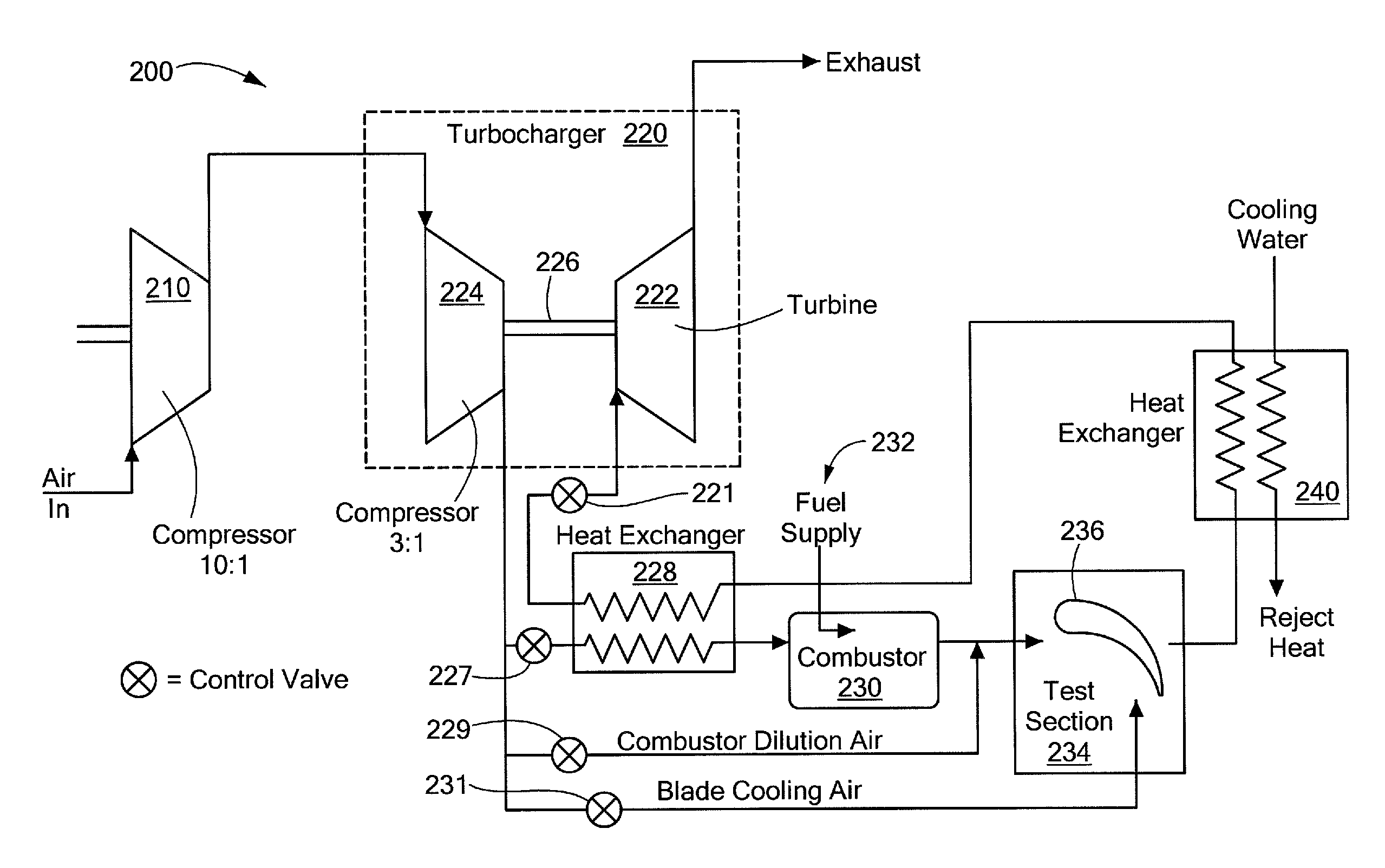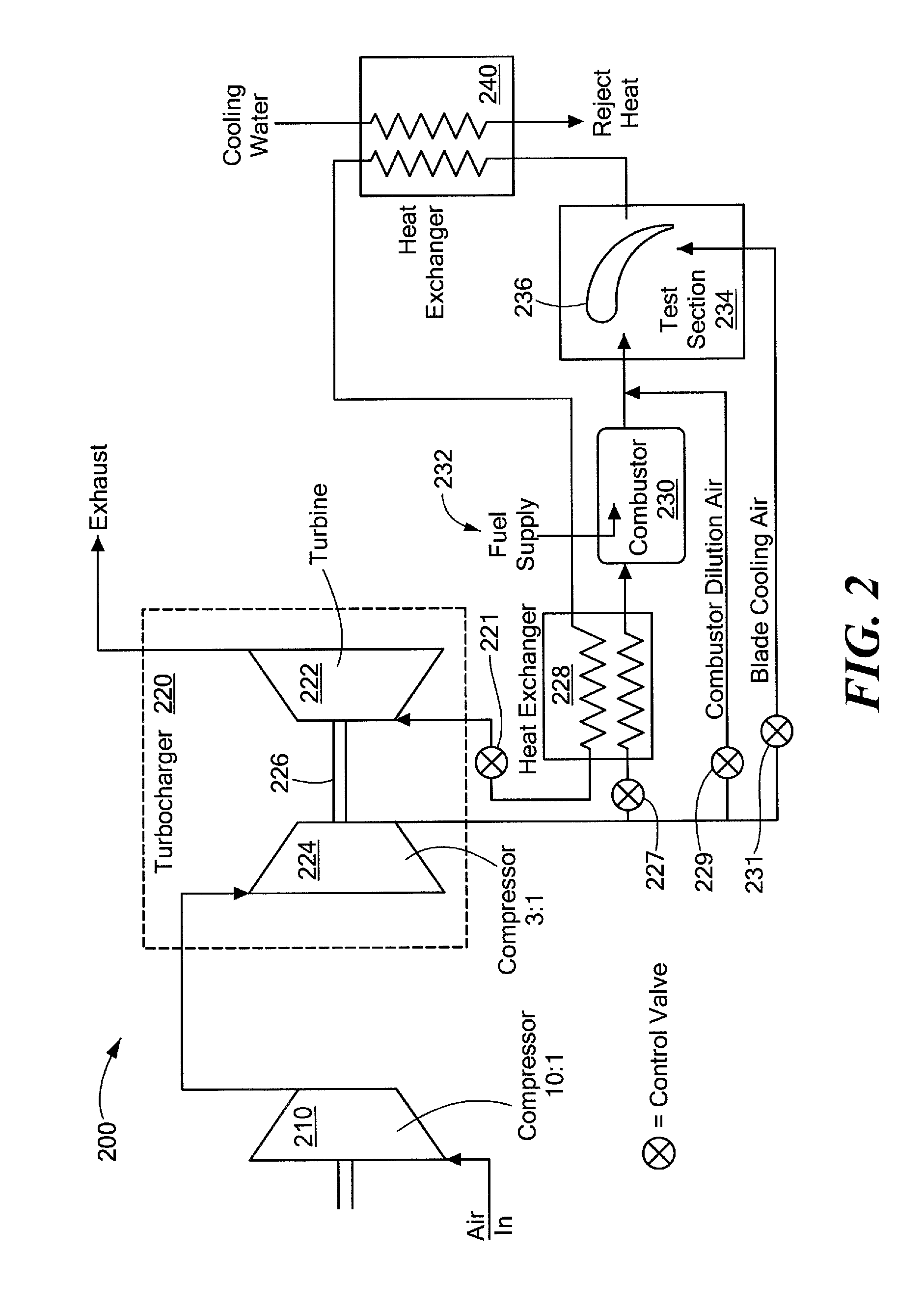System and method for imposing thermal gradients on thin walled test objects and components
a thin walled test object and thermal gradient technology, applied in the direction of gas turbine engine testing, machines/engines, instruments, etc., can solve the problems of increasing the cost of engine programs, increasing the number of engine programs, and not having a cost-effective way to conduct representative tmf testing. , to achieve the effect of enhancing the effectiveness of high-mass flow fluid, thin walls, and large thermal and/or pressure gradients
- Summary
- Abstract
- Description
- Claims
- Application Information
AI Technical Summary
Benefits of technology
Problems solved by technology
Method used
Image
Examples
Embodiment Construction
[0033]This application claims the benefit of U.S. Provisional Application No. 61 / 065,757, filed Feb. 14, 2008, the entire disclosure of which is hereby incorporated herein by reference.
[0034]In accordance with the disclosed system and method, there is provided a test facility that has a test chamber for housing a test component upon which is imposed a relatively large (steep) through-wall temperature gradient, such as, for example, 400° F. The test component may also be subjected to axial load and to internal impingement cooling that may be uniform, non-uniform or focused to a target location on the test component. The test facility provides an emulation of operational thermal and mechanical fatigue loads (TMF) in a gas turbine engine. The test facility can be used to contribute to producing enhanced service life predictions, as well as improved designs for gas turbine engine components.
[0035]In a gas turbine engine, parameter variation may realistically be carried out over a very n...
PUM
 Login to View More
Login to View More Abstract
Description
Claims
Application Information
 Login to View More
Login to View More - R&D
- Intellectual Property
- Life Sciences
- Materials
- Tech Scout
- Unparalleled Data Quality
- Higher Quality Content
- 60% Fewer Hallucinations
Browse by: Latest US Patents, China's latest patents, Technical Efficacy Thesaurus, Application Domain, Technology Topic, Popular Technical Reports.
© 2025 PatSnap. All rights reserved.Legal|Privacy policy|Modern Slavery Act Transparency Statement|Sitemap|About US| Contact US: help@patsnap.com



